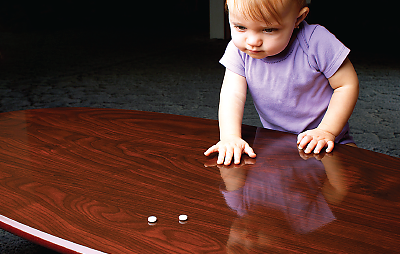Psychotropics Lead List for Youth-Related Drug Poisoning Calls
Abstract
Safe Kids Worldwide releases a report on the alarming rates and reasons for youth-associated drug poisoning.
A new report shows that almost half of the calls made to United States poison control centers on behalf of those aged 19 and under are related to medication—with psychotropic drugs representing 50 percent of the top 10 medications contributing to unintentional poisoning.

Safe Kids Worldwide, in partnership with the American Association of Poison Control Centers (AAPCC), conducted a study to identify the types of medications that contribute to the volume of calls made to poison control centers for drug poisoning in children and teens.
Safe Kids said in statement that the study was designed to “take a deeper look at two specific groups of calls related to medicine: unintentional-general exposures, when kids get into medicine without intending to take it (such as when a young child takes medicine on a nightstand); and unintentional-therapeutic errors (such as when a child is given too much medicine or the wrong medicine).” The study did not include cases in which medications were taken intentionally.
After evaluating data generated from the National Poison Data System of calls made to poison control centers in 2013, analysts from Safe Kids found that 1.34 million calls were associated with poisoning of a child or teen, with 547,042 of those calls related to unintentional-general exposures or unintentional-therapeutic errors. Though 75 percent of the calls made for unintentional drug poisoning involved young children aged 1 to 4 compared with 3 percent for teens, serious health outcomes resulting from unintentional poisoning were six times greater in those aged 15 to 19. The most common mistakes made by teens were forgetting to take a medicine and then doubling up or taking two medicines with the same ingredients, the study found. Atypical antipsychotics and amphetamines intended for the treatment of attention-deficit/hyperactivity disorder were the top two medication classes for serious health outcomes in teens.
Other psychotropic medicines commonly reported for unintentional poisoning throughout all studied age groups included benzodiazepines, clonidine, and methylphenidate. Nonpsychotropic drug classes included antihypertensives such as beta blockers and analgesics such as ibuprofen and acetaminophen.
AAPCC Executive Director Stephen Kaminski, J.D., said the current report points to an urgent need to continue to educate families on using medicines responsibly.
“Our nation’s 55 poison centers play a crucial role in keeping Americans safe by providing poison prevention and free, expert information and advice,” said Kaminski. “In addition to the public, emergency clinicians and pediatricians rely on poison-center professionals to help treat their patients. In fact, about 20 percent of all poison-center exposure calls come from health care providers. It’s good to know that expert help is just a phone call away when the unthinkable happens.” ■
“Medicine Safety for Children: An In-Depth Look at Calls to Poison Centers” can be accessed here.




